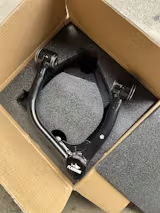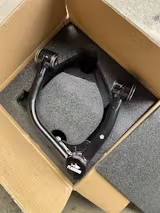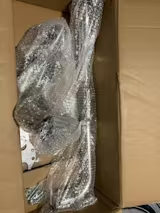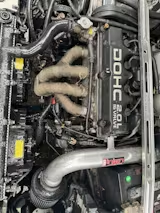In the modern era of automotive technology, car manufacturers strive to develop cleaner and more efficient engines. One such innovation is the Selective Catalytic Reduction (SCR) system, which reduces harmful nitrogen oxide (NOx) emissions. The SCR system injects a urea solution, Diesel Exhaust Fluid (DEF), into the exhaust stream. The DEF then reacts with the NOx in the exhaust gas, converting it into harmless nitrogen and water.
The heart of the SCR system is the reductant pump assembly, which is responsible for pressurizing and delivering the DEF fluid to the DEF injector. This complex system comprises a diaphragm pressure pump, pressure sensor, purge valve, outlet filter, and internal heating element. When the vehicle is in operation, the pump operates to fill the reductant pressure line and purge any air from the system. Once the pressure is built, the reductant injector opens to inject the DEF into the exhaust stream.
When the vehicle is shut down, the system undergoes a purge cycle to remove any remaining DEF. The reductant injector is closed, and the pump is reversed to bleed down the pressure from the reductant pressure line. The injector is then opened to allow air to enter the line. This enables the pump to purge any remaining DEF from the system and return it to the reductant tank. Once the purge cycle is complete, the reductant injector is closed. The pump is replaced to its forward position, ready for the next process. The reductant pump assembly plays a vital role in the SCR system, ensuring the efficient and effective reduction of harmful emissions from the vehicle.
Understanding DEF and its Deleting Process
DEF (Diesel Exhaust Fluid) is an integral part of the 6.7 Powerstroke egr block off plate engine's emission control system. However, some truck owners may decide to delete the DEF system due to various reasons, such as wanting more power, increased fuel efficiency, or simply avoiding the cost of buying DEF. If you are considering DEF deletion, it is essential to know the process involved, the necessary tools, and some tips to make it a successful and safe process.
The first step in DEF deletion is to remove the DEF tank, which is typically located near the fuel tank. This tank contains the DEF fluid; you must drain it before removing it. Once the tank is removed, you can disconnect the DEF lines and sensors from the engine compartment.
After disconnecting the DEF lines and sensors, the next step is to remove the DEF injector, which is responsible for injecting the DEF into the exhaust stream. This can be tricky, as it requires removing the exhaust system to access the injector. You will need specialized tools, such as an exhaust pipe cutter and a thread chaser, to remove the injector properly.
Once the injector is removed, you must replace it with a DEF delete kit, which replaces the injector with a block-off plate. The delete kit typically comes with instructions on how to install it, and it's essential to follow the instructions carefully to avoid any damage to the engine.
When installing the 6.7 powerstroke delete kit, you will need a few tools, such as a torque wrench, sockets, and pliers. It is also essential to have a digital tuner to reprogram the engine control module to bypass the DEF system properly.
Finally, it is essential to remember that DEF deletion is illegal in most states and can result in hefty fines or even loss of warranty. Therefore, it is important to understand the potential risks and consequences of DEF deletion before proceeding.
Pros & Cons of DEF Deletion
DEF deletion can offer some advantages for truck owners, but it also comes with some drawbacks. In this section, we will explore the pros and cons of it.
Pros:
One of the main benefits of DEF deletion is increased power and fuel efficiency. The engine can operate at higher temperatures without the DEF system, allowing for more power and better fuel economy. This can be especially beneficial for truck owners who use their vehicles for heavy-duty tasks such as towing or hauling.
DEF systems can also be costly to maintain. Owners can save money on fluid costs, maintenance, and repairs by removing the DEF system.
Moreover, it can be complex and prone to malfunctions, leading to expensive repairs. Removing the system can reduce the likelihood of these issues.
Cons:
One significant drawback of DEF deletion is increased emissions. The 6.7 Powerstroke engine is designed to operate with a DEF system to meet emissions standards. Without the DEF system, emissions can increase significantly, leading to environmental harm and potentially violating federal and state emissions regulations. This can result in costly fines and legal consequences.
Another potential drawback of DEF deletion is the risk of mechanical problems. The 6.7 Powerstroke delete kit is engineered to operate with a DEF system, and removing it can cause some unforeseen issues. For example, the engine may experience increased wear and tear due to increased temperatures, leading to premature engine failure. Moreover, moving the DEF system can lead to increased fuel contamination and fuel filter clogging.











1 comment
Lunch box
Is there a way to legally delete a Ford f350 Harley Davidson truck with a 6.7 in it